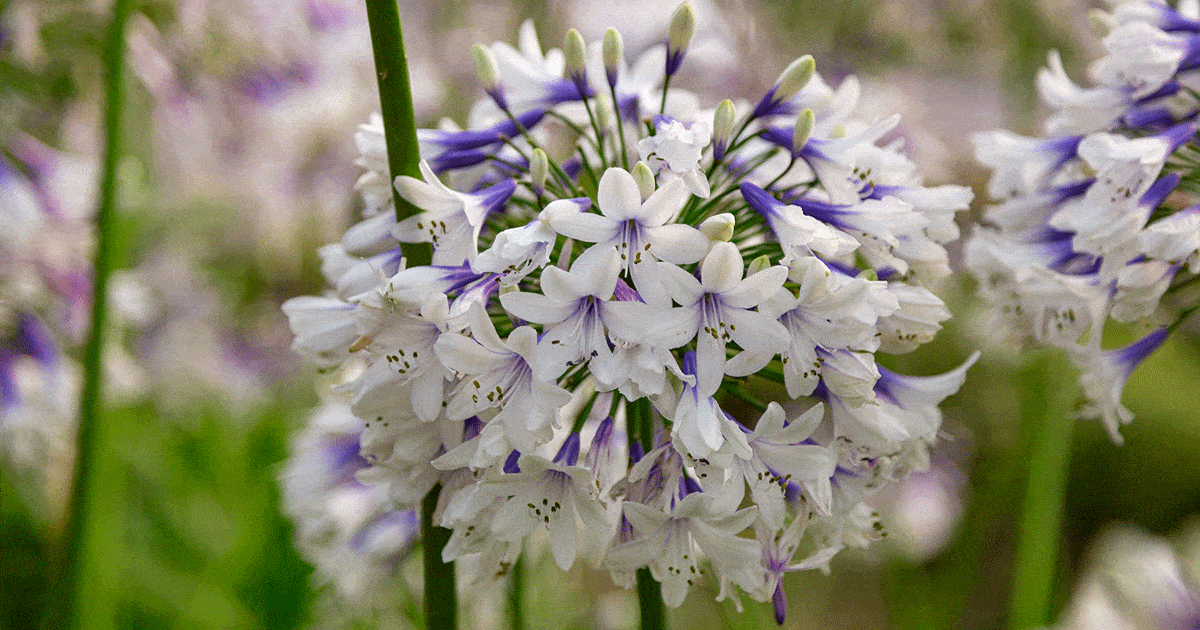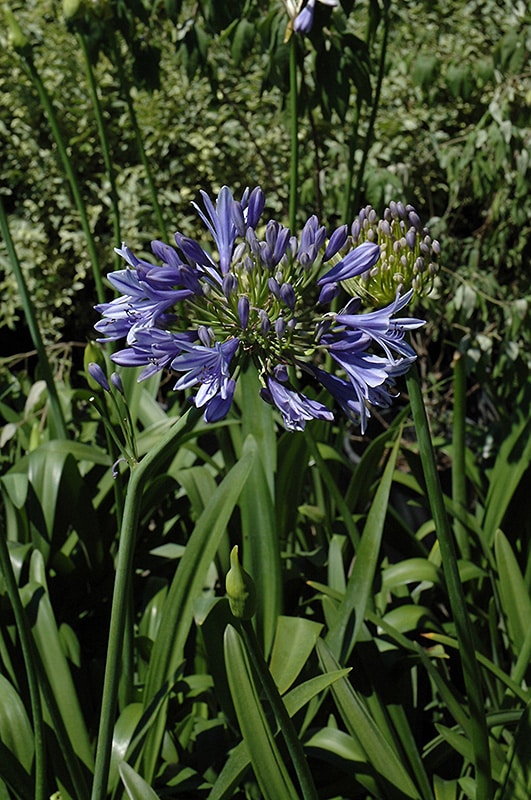Stunning Agapanthus: Enhancing Your Yard's Appeal
Stunning Agapanthus: Enhancing Your Yard's Appeal
Blog Article
Grasping the Art of Agapanthus Treatment: Essential Steps for Healthy And Balanced Growth and Vivid Blooms
In the world of horticulture, the farming of agapanthus stands as a gratifying venture for those that seek to support these elegant flowering plants. With their striking blooms and elegant foliage, agapanthus has recorded the focus of gardeners worldwide. However, attaining ideal growth and vivid blossoms calls for a nuanced approach that includes numerous crucial actions. From picking the right range to understanding pruning strategies, the journey towards cultivating flourishing agapanthus plants is multifaceted and holds the crucial to opening the complete potential of these botanical gems.

Picking the Right Agapanthus Range

When picking the best Agapanthus variety for your yard, consider aspects such as climate viability, flower shade, and growth routine. Additionally, consider the climate in your area to guarantee the Agapanthus range you select can thrive in your certain problems. Comprehending the growth practice of various Agapanthus varieties is important for appropriate placement within your yard.
Perfect Planting Problems
Taking into consideration the optimal environmental needs is necessary for successful Agapanthus cultivation. Agapanthus thrives in well-draining dirt with a slightly acidic to neutral pH level. When growing, choose a place that receives full sunshine to partial shade. In hotter climates, providing some mid-day shade can protect against scorching of the leaves. Agapanthus plants are delicate to cold temperature levels and should be protected from frost throughout cold weather.
To make certain healthy and balanced growth and dynamic blooms, plant Agapanthus light bulbs at a deepness of concerning 2-4 inches and space them 8-12 inches apart. Mulching around the base of the plants aids retain wetness and reduces weed growth.
Watering and Fertilizing Tips
Preserving appropriate dampness degrees and providing essential nutrients are essential aspects in the treatment program for Agapanthus plants. When it comes to watering Agapanthus, it is critical to strike a balance. These plants prefer constantly wet dirt however are vulnerable to root rot if overwatered.
Fertilizing Agapanthus is important for advertising healthy growth and prolific blooms. Use a balanced fertilizer, such as a 10-10-10 formula, in the very early springtime as new development emerges. Repeat this application every 6-8 weeks throughout the growing season. Avoid too much fertilizing, as it can bring about lavish vegetation at the expense of flowers. Constantly adhere to the maker's directions for correct dilution and application methods. By following these watering and fertilizing suggestions, you can ensure your Agapanthus plants grow and create vivid, lasting blooms.
Trimming Strategies for Agapanthus
Pruning Agapanthus plants at the suitable times and with appropriate techniques is important for preserving their health and wellness and promoting optimum growth and flowering. The perfect time to prune Agapanthus is in late winter or early check here spring prior to brand-new development emerges. Beginning by removing any kind of dead or yellowing fallen leaves near the base of the plant. Cut them as close to the ground as feasible without harming the arising shoots.
Deadheading invested blossoms can likewise reroute the plant's power into producing more blooms rather than setting seeds. If you desire to accumulate seeds for propagation, leave some blossoms to fully grown and dry on the plant.
Keep in mind to use tidy, sharp devices to make specific cuts and reduce the risk of presenting diseases. Agapanthus. Normal trimming will certainly aid keep your Agapanthus looking healthy and balanced and cool while making certain an abundant display of attractive blooms
Dealing With Typical Pests and Conditions
After ensuring proper pruning methods for Agapanthus, it is important to attend to typical insects and illness that can affect the health and wellness and vigor of these plants. Agapanthus plants are typically durable yet can still succumb to certain concerns. One usual insect that influences Agapanthus is the Agapanthus gall midge. This small, orange fly lays its eggs in the foliage, resulting in distorted growth and flower buds that fail to open. To combat this insect, prune and damage any type of damaged plant components and consider using insecticidal soap.
Furthermore, Agapanthus plants can suffer from important site root rot if they are grown in poorly draining pipes soil. By being cautious and taking timely activity versus insects and conditions, you can help your Agapanthus plants prosper and create vibrant blossoms. Agapanthus.

Final Thought
To conclude, mastering the art of agapanthus treatment involves picking the ideal selection, providing optimal growing problems, proper watering and feeding, ideal trimming methods, and dealing with typical parasites and diseases. By complying with these essential steps, you can make sure healthy development and lively blooms for your agapanthus plants. Keep in mind to frequently check and preserve your plants to promote their general wellness and durability.
To ensure healthy development and lively blooms, plant Agapanthus light bulbs Continued at a deepness of about 2-4 inches and room them 8-12 inches apart. By following these watering and feeding ideas, you can ensure your Agapanthus plants flourish and create lively, resilient blossoms.
One usual pest that affects Agapanthus is the Agapanthus gall midget. Furthermore, Agapanthus plants can suffer from origin rot if they are planted in badly draining soil. By following these necessary steps, you can make certain healthy and balanced development and vibrant blossoms for your agapanthus plants.
Report this page